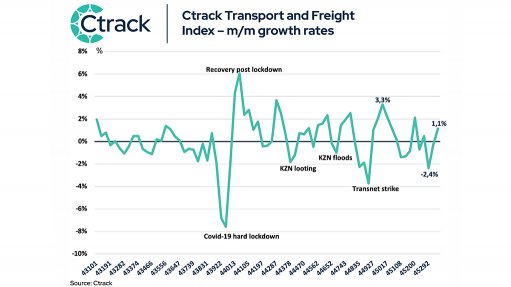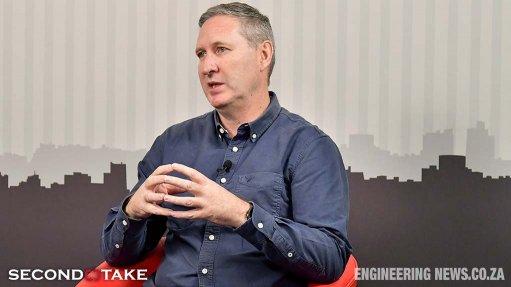Making heating and cooling energy efficient
This article has been supplied as a media statement and is not written by Creamer Media. It may be available only for a limited time on this website.
A Day of the year has been allocated to the power of the sun thanks to the UN Environment Programme (UNEP). International Day of the Sun on 03 May is meant to recognise and promote the expansion of this abundant renewable energy resource.
International Day of the Sun also coincides with a major research collaboration to identify the optimal thermal technologies that companies and households can use as alternative sources of energy. The first of these collaborations will focus on solar water heating potential using different solar technology solutions.
The move by the South African National Energy Development Institute (SANEDI) and the Council for Scientific and Industrial Research (CSIR) could take huge pressure off the overstrained national electricity grid and enable easing of load shedding if companies switch to solar and related thermal heating and cooling technologies. Companies switching to low-carbon technologies would also shield themselves against high electricity tariff increases, save money, give themselves greater energy security, and contribute to reducing carbon emissions.
SANEDI and the CSIR have established a Thermal Laboratory that will test and compare a range of low carbon technologies and develop business cases for implementation of the most effective solutions at different scales, explains SANEDI Manager for Renewable Energy Dr Karen Surridge. “We want to identify the most savvy, energy efficient thermal technologies to use for heating and cooling tailored towards specific types of businesses and present these to companies for evidence based consideration.”
Heating and cooling are intensive users of energy. They often account for between 40% and 50% of electricity costs in companies and households, and draw large amounts of electricity from the overstretched national grid if coal-based electricity is used.
Technologies such as solar water heating have been shown to be highly energy efficient. Recent examples of this have been shown by the Southern African Solar Thermal Training and Demonstration Initiative (SOLTRAIN) funded by the Austrian Development Agency and in which SANEDI is a South African partner.
SANEDI often under the banner of SOLTRAIN is creating awareness on Renewable Energy (RE), Energy Efficiency (EE), more specifically on solar water heating technology at military units in Limpopo province of South Africa. After only 2 and half years of operation the system is already making significant savings in electricity and water.
The project paved the way for other government entities to look into installation of renewable energy technologies at a large scale for their facilities, including ‘Decision Makers’ seminars in which government entities were trained on the technologies and their benefits. The training for government was instituted on Renewable Heating and Cooling including high temperature applications.
Some of the many projects undertaken by SOLTRAIN include:
- Wits Junction student residence complex in Johannesburg estimates it will save R40 million in electricity and other costs over the 20-year lifespan of a combined solar water heating, co-generation, and gas heating system it has installed. The complex consists of 14 buildings and provides accommodation for 1,103 students who use 94,000 litres of hot water per day.
- The SA National Defence Force has saved 490,500kWh of energy and R1,079,100 in electricity costs after installing a relatively small (3000L) solar water heating system at Air Force Base Hoedspruit, Limpopo.
- Centurion Building retirement residence in Sea Point, Cape Town, has saved at least 470MWh of electricity and R220,000 in electricity costs since it replaced its electric boilers with a hybrid solar thermal and heat pump hot water system in 2018.
- Klein Karoo International (KKI), a major ostrich leather, feathers and meat producer based in Oudtshoorn, Western Cape, replaced its fuel oil water heating system with a solar thermal plant and saved just over R413, 000 in its first year of operation
- Melomed Gatesville Hospital in Cape Town has saved R130,000 a year after switching to a hybrid solar water heating and heat pump system.
In addition to being involved in the SOLTRAIN initiative, SANEDI has also managed solar thermal projects on behalf of the Gauteng provincial government. These include installation of three 300 litre high pressure solar water heaters which has reduced electricity costs at Frida Hartley Shelter for Women in Johannesburg from about R40,000 to R1,000 a month, and the fitting of solar water heaters that could save Sibonile Primary School an estimated R10,000 a month.
“Using solar thermal technology to reduce pressure on the national grid is not new but we need to revive it and realise how powerful it is as a means to save electricity, ease load shedding, alleviate pressure on the national grid, save money and reduce carbon emissions,” says Surridge. “Solar thermal systems can be used at scale, from small household installations to large-scale industrial, commercial and agricultural installations. No matter how big or small your solar thermal system is, it will help and ensure you have hot water when you need it.”
Comments
Announcements
What's On
Subscribe to improve your user experience...
Option 1 (equivalent of R125 a month):
Receive a weekly copy of Creamer Media's Engineering News & Mining Weekly magazine
(print copy for those in South Africa and e-magazine for those outside of South Africa)
Receive daily email newsletters
Access to full search results
Access archive of magazine back copies
Access to Projects in Progress
Access to ONE Research Report of your choice in PDF format
Option 2 (equivalent of R375 a month):
All benefits from Option 1
PLUS
Access to Creamer Media's Research Channel Africa for ALL Research Reports, in PDF format, on various industrial and mining sectors
including Electricity; Water; Energy Transition; Hydrogen; Roads, Rail and Ports; Coal; Gold; Platinum; Battery Metals; etc.
Already a subscriber?
Forgotten your password?
Receive weekly copy of Creamer Media's Engineering News & Mining Weekly magazine (print copy for those in South Africa and e-magazine for those outside of South Africa)
➕
Recieve daily email newsletters
➕
Access to full search results
➕
Access archive of magazine back copies
➕
Access to Projects in Progress
➕
Access to ONE Research Report of your choice in PDF format
RESEARCH CHANNEL AFRICA
R4500 (equivalent of R375 a month)
SUBSCRIBEAll benefits from Option 1
➕
Access to Creamer Media's Research Channel Africa for ALL Research Reports on various industrial and mining sectors, in PDF format, including on:
Electricity
➕
Water
➕
Energy Transition
➕
Hydrogen
➕
Roads, Rail and Ports
➕
Coal
➕
Gold
➕
Platinum
➕
Battery Metals
➕
etc.
Receive all benefits from Option 1 or Option 2 delivered to numerous people at your company
➕
Multiple User names and Passwords for simultaneous log-ins
➕
Intranet integration access to all in your organisation


















